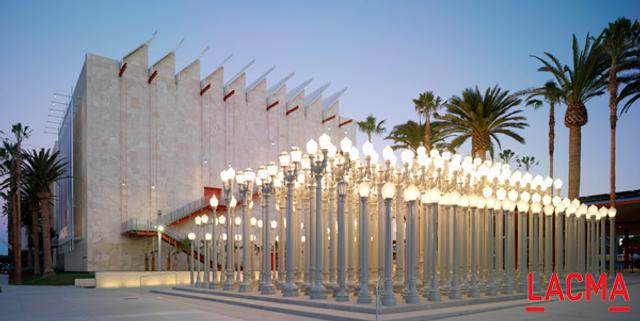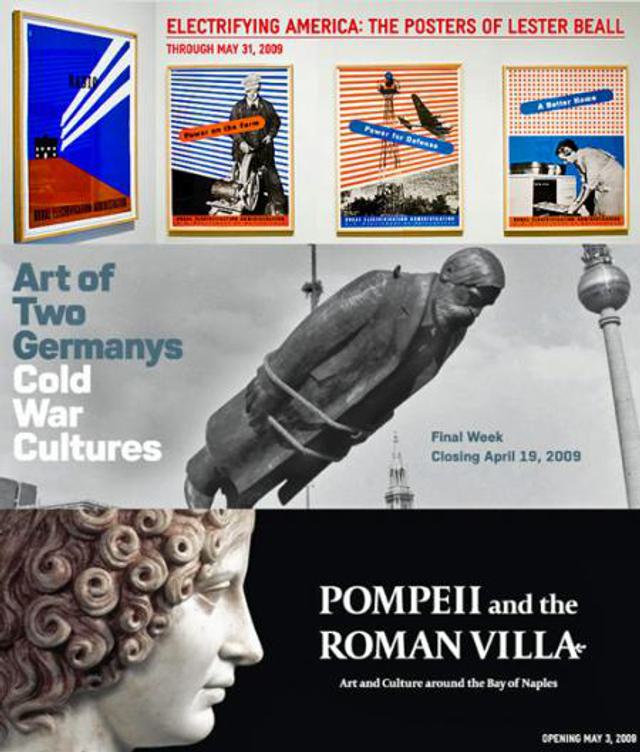Los Angeles County Museum of Art: capital campaign
- Exhibited by
- Rich Fox, chairman & CEO, Rich Fox & Associates, Inc.
- Added
- September 03, 2009
- Medium of Communication
- Direct mail, Telephone
- Target Audience
- Individuals
- Type of Charity
- Arts
- Country of Origin
- USA
- Date of first appearance
- Unknown
SOFII’s view
This campaign both challenges and complements the traditional face-to-face ask of capital campaign fundraising. By using a direct mail warm up and a telephone call instead, the Los Angeles County Museum was able to include many of their ‘lower dollar’ donors in a significant capital campaign. By following the approach described here, nonprofit organisations that find it difficult to reach very wealthy donors can supplement their capital campaign by using direct mail and the phone to enlist support from lower dollar donors.
Creator / originator
LA County Museum of Art, Peter Taggar of Peter Taggar and Associates and Rich Fox and Alan Facter of Facter Fox & Associates, Inc.
Summary / objectives
The goal was to double the size of the museum, which the capital campaign successfully allowed them to accomplish.
Background
In this campaign, the museum had the customary face-to-face meetings with those donors who were believed to have a greater capacity to give. Donors were asked for large gifts of at least $10,000 to be paid over several years.
In a traditional capital campaign, volunteer campaign fundraisers take the ‘card’ with all of the relevant prospect information at the initial campaign meeting, thus assuming the responsibility to ask for the gift. Volunteers take the cards of people with whom they have a relationship and from whom they think they could get the gift. Those cards left on the table are prospects from whom none of the volunteers feel they could successfully solicit the gift.
We only approached by telephone those people whose ‘cards were left on the table’ – prospects who would otherwise not have been approached at all other than through the mail.
We asked for a gift of $10,000 payable over several years, and negotiated lower gifts from there.
Included in this approach were non-donors and low dollar donors whose highest previous donations were less than $100, who were thought to have a potential interest in supporting the museum and the capacity to make a large gift. The non-donors were community leaders, wealthy individuals, patrons to other arts groups, etc. (As an aside, on this list were former President Ford and film star Charlton Heston.)
The calls were made following a mailing that described the capital campaign goals and explained how the donors might participate in helping to meet those goals.
Special characteristics
As part of this campaign, in addition to asking for very large gifts from those prospects who were believed to have the capacity to make such large gifts, we also called lower level donors who did not have such capacity.
It was in this part of the campaign that we created a less traditional ask – the ‘match your annual gift for x-number of years’ approach – when soliciting lower level donors and members. This was a way for donors to contribute to the capital campaign at levels similar to their annual giving. They could still give their ‘normal’ annual donations to LACMA and match that with a donation to the capital campaign fund over the next five years.
The results were so great that I repeated and refined this approach through many other capital campaigns in subsequent years.
For those donors with a recent giving history, the advantages of this approach are many. I will discuss just a few here.
First, you are more likely to obtain a gift, because you are asking for a gift at a dollar level that seems reasonable and appropriate to the donor, as it matches an amount they are already giving. By only asking them to match their annual giving each year for the next five years with a gift to the campaign of an equal amount, you are asking them for an amount that they feel they have already given.
The reality is, however, that you are asking them to give twice as much as they have ever given, as you are asking them to give this gift in addition to continuing to give that same amount each year to the annual campaign. We made that very clear in the call so donors understood what we are asking them.
Second, you generally get the size of gift for which you are asking. Rather than negotiating down to a lower gift level, this negotiation assumes that the gift being requested will be given and negotiates instead the number of years that the match will continue. So, if the donor feels that a five-year match is too great a commitment to make, the caller will then suggest a three-year match. And, if that is too much, the final request is a one-year match. Thus, generally, the size of the gift is not discussed, but rather only the length of the gift.
Third, this approach feels more reasonable to the caller, thereby making the caller’s attitude far more positive towards it. This positive attitude generally translates into greater success.
Fourth, this approach minimises the negative effect on donors’ annual giving during the campaign. Since the request is a match of the annual gift each year for the next five years, it assumes that the annual gift of that same amount will also be made each year. In fact, the donor is in effect making a moral commitment to continue his or her annual giving along with the special campaign gift. So, though potential annual gift upgrades will be sacrificed during the campaign period, annual gift retention is not.
Fifth, if donors agree to a shorter term match than you had initially requested, you can go back to them once they have completed their agreed payments and ask them to reconsider extending the length of the match at that time.
Sixth, once donors’ giving to the special campaign is concluded, there is an outstanding opportunity to greatly upgrade the donors’ annual giving. As the donors will now be accustomed to giving twice as much each year, it is seen as very reasonable to request that they continue to give at that level but, now, entirely to the annual campaign.
Influence / impact
As a result of this capital campaign, the Los Angeles County Museum of Art doubled the size of the museum, allowing far more of the permanent collection to be displayed.
Costs
Costs are not more than for a normal professionally managed telephone fundraising campaign.
Results
The results of this effort were outstanding. The phone portion of the campaign brought in pledges of over $1,500,000.
In the part of the campaign to those with greater assumed capacity to give, the results were particularly exciting. In this part of the campaign alone, from speaking to fewer than 300 people we raised pledges of over $100,000, with eight people pledging $10,000 each.
Merits
From that moment on I was convinced that direct mail and the telephone had an important role to play in the community component of capital campaigns.
Other relevant information
If you’re planning to undertake a campaign like this, other issues to consider include:
1. Whom to call?
One of the many advantages of telephone fundraising is that things can be quickly, easily and inexpensively tested. So, I would recommend that you test calling both previous donors and non-donors alike. The goal in approaching most of the non-donors would be less to raise large amounts of net capital campaign revenue, than to involve new people as donors. Thereafter these newly acquired donors could be converted to annual giving donors.
Those lists that perform well will be thoroughly called, while calling would be discontinued to those lists that prove to be unproductive.
2. Whom to mail?
I would mail everyone to whom you are planning to test placing a call, as well as all of those prospects within the above categories for which you are unable to find a telephone number. In fact, I would recommend that you mail what I term an opt-out pre-call letter to all of these prospects before you even do a telephone number search.
The opt-out pre-call letter approach is one that I helped to pioneer in the 1990s in Europe. When we introduced our telephone fundraising services there, we found a very significant concern among our clients about the potential negative effect that a call might have upon the organisation’s relationship with its donors.
So, to help mitigate any potential problems we suggested that a letter be sent in advance, to explain the reason for the call and to give the donor the opportunity to not receive the call, either by ‘opting out’, or by making a gift by mail.
The results of this approach have been extraordinary. The letter helps to build relationships, all but eliminates complaints and saves the cost of calling those people who do not wish to contribute. It also often produces literally twice the money as an identical letter that just asks for money without any mention of a possible phone call.
It is because of the great success of this type of letter that I recommend that a telephone number search be delayed until after the letter is sent so that you can send it to all your prospects, whether or not you will ultimately be able to find a number for them. You will then be able to use language in the letter indicating that if you don’t hear from them soon, either through their opting out or making a gift, you will try to call them.
3. When to call? 4. When to mail?
I would recommend that you send the letter by first class post about three weeks before you begin calling, which will give people adequate time to respond, while keeping the call close enough in time to the letter to have it be more likely to be remembered by the prospect.
























